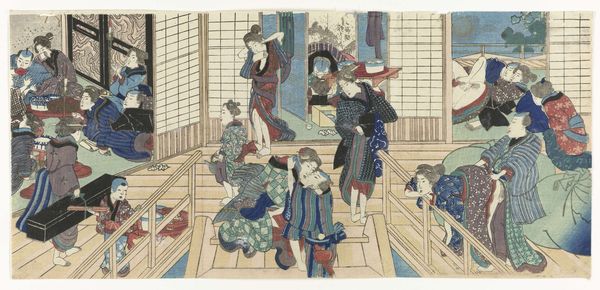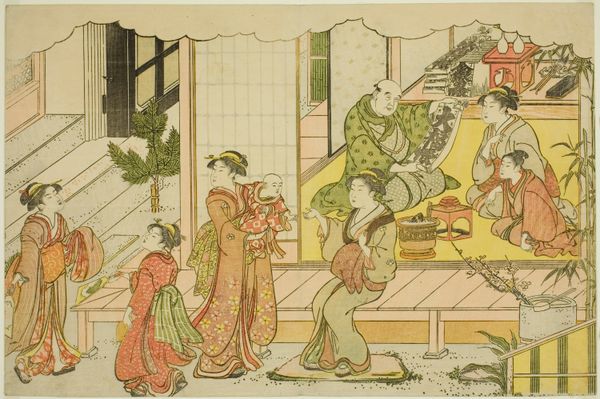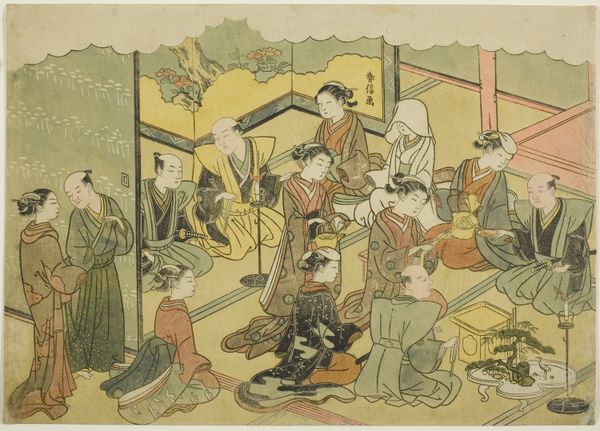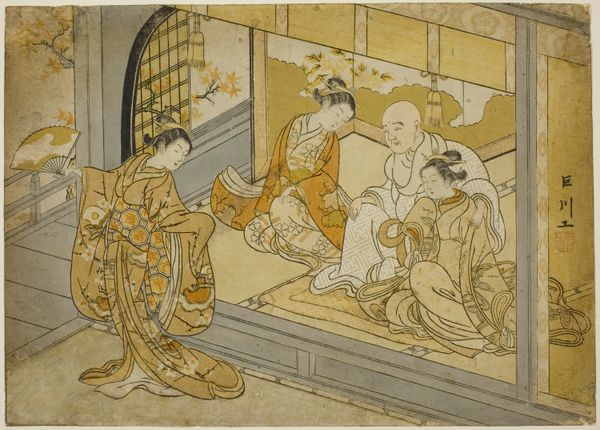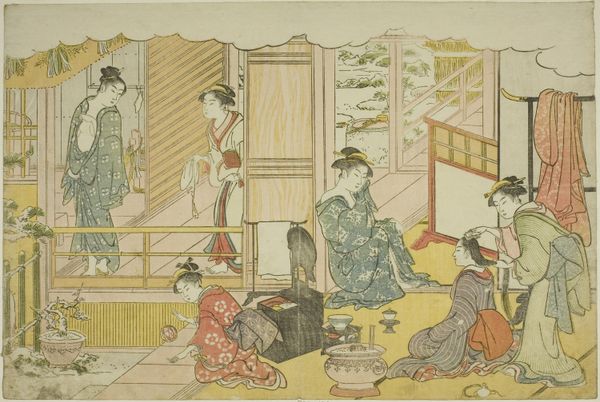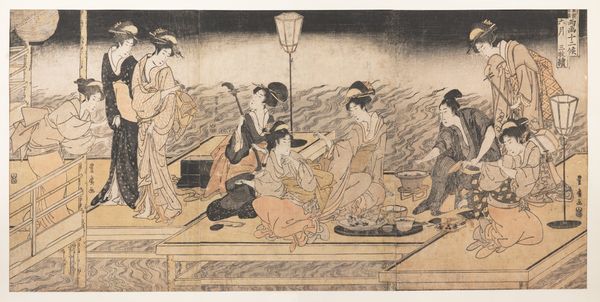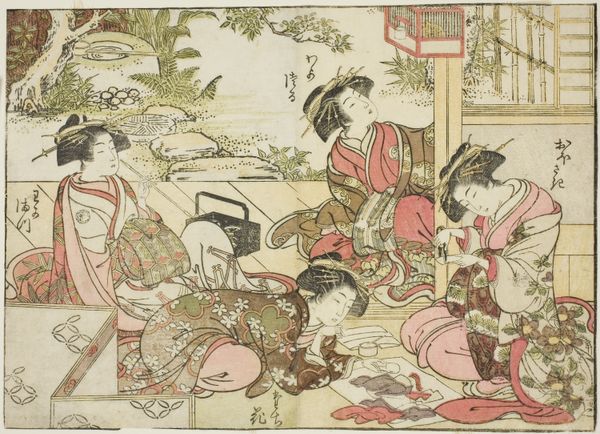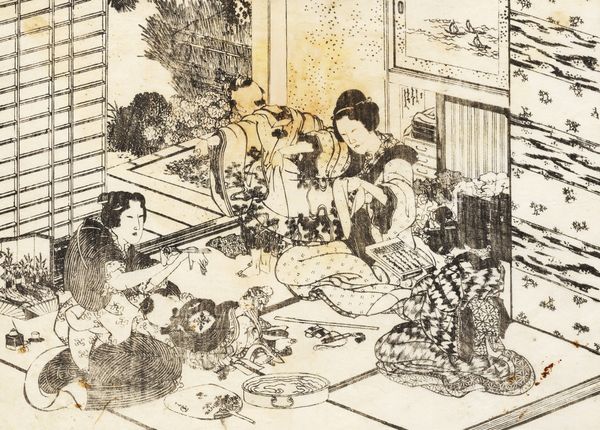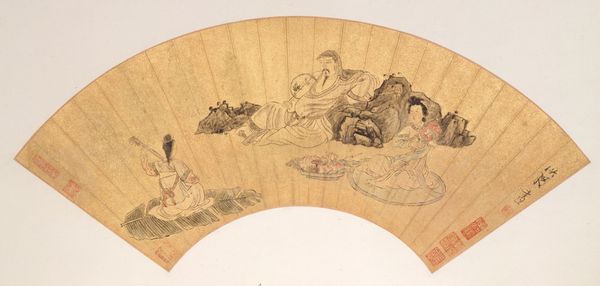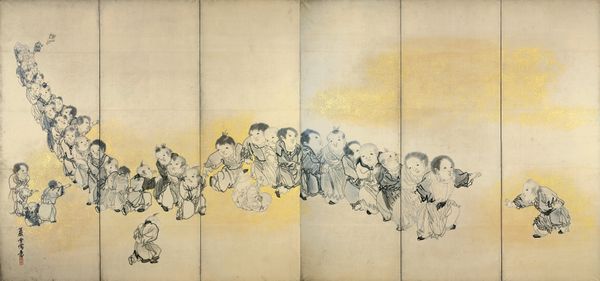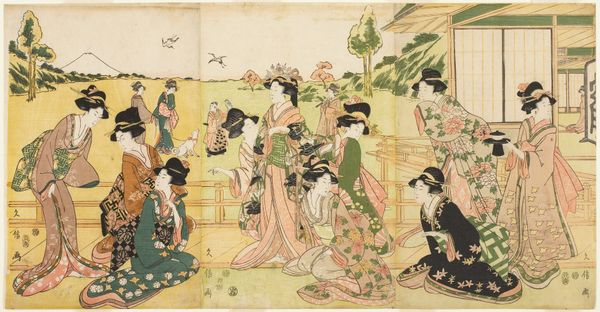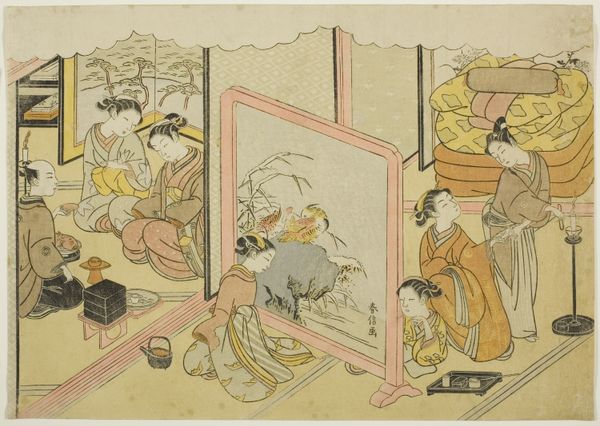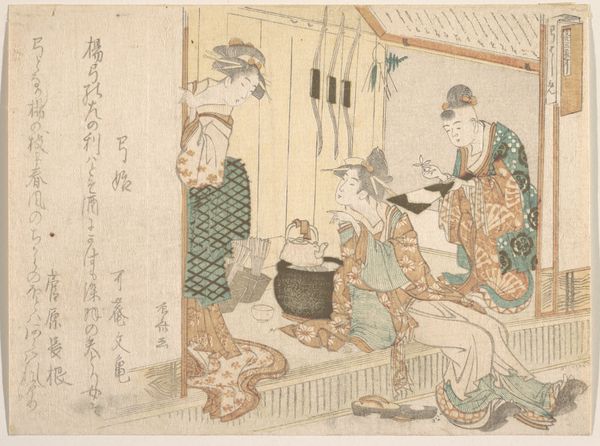
painting, watercolor, hanging-scroll, ink
#
water colours
#
narrative-art
#
painting
#
asian-art
#
ukiyo-e
#
japan
#
figuration
#
watercolor
#
hanging-scroll
#
ink
#
orientalism
#
line
#
genre-painting
Dimensions: 16 5/8 × 21 3/8 in. (42.23 × 54.29 cm) (image)55 13/16 × 25 1/8 in. (141.76 × 63.82 cm) (mount, without roller)
Copyright: Public Domain
Curator: What strikes me immediately is the sheer exuberance! The figures are lively, almost bursting from the frame with good cheer. Editor: That's true! It looks as if a party is happening, which seems suitable given the work depicts the Seven Lucky Gods. The Minneapolis Institute of Art holds this late 19th or early 20th century Japanese hanging scroll by Imao Keinen. Curator: Precisely! Each god represents a different facet of good fortune, be it wealth, longevity, or wisdom. Look at Ebisu with his fishing rod, a symbol of prosperity and abundance. These aren't just deities, but almost archetypes of wished-for virtues. Editor: The composition itself fascinates me. The delicate watercolors, coupled with ink on what I assume is silk, give the scene an almost ethereal quality. It’s a fascinating contrast with the boisterous subject matter. Curator: And the visual language speaks volumes. Each god carries distinct iconography instantly recognizable within Japanese culture – and the knowing audience would have immediately decoded the prayerful significance of it all. Editor: But beyond the symbolism, consider the artist's hand and materials. The sheer skill involved in applying these washes of color so precisely, the preparation of the ink, the weaving of the silk support... It's all part of the artwork's value, even beyond its subject. Did Keinen choose those materials deliberately to evoke a specific class association with silk, for example? Curator: That is insightful. This hanging scroll would originally function within a carefully designed interior space, imbued with the intention of inviting positive energies—perhaps also a conversation starter with invited guests! It is less a painting and more like a carefully staged blessing. Editor: True, but the production process also carries a weight – not just artistry, but labor. Understanding the lives involved in that gives a fuller context to our understanding of it today. Curator: A welcome counterpoint! We should remember that it has an almost talismanic power as a cultural symbol. This image is a vibrant echo of collective hopes across time, resonating in its intricate symbolism. Editor: I will also consider how these images also participate within and contribute to the culture around the practice and materials of watercolor scroll production and the economics and art history linked to that process. Curator: Well, by considering not just who it depicts but how, where, and with what means it was made and functions we come to see this painting in fuller bloom. Editor: I agree; a richer understanding comes by considering it all.
Comments
No comments
Be the first to comment and join the conversation on the ultimate creative platform.

